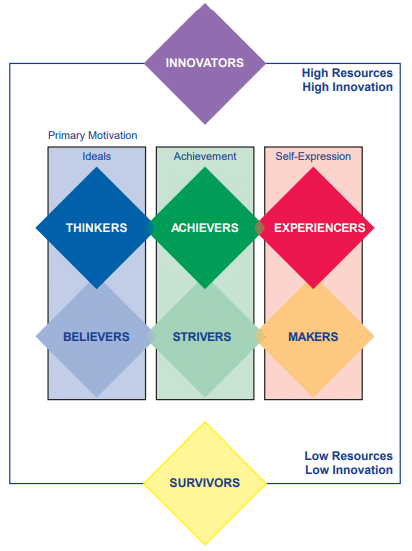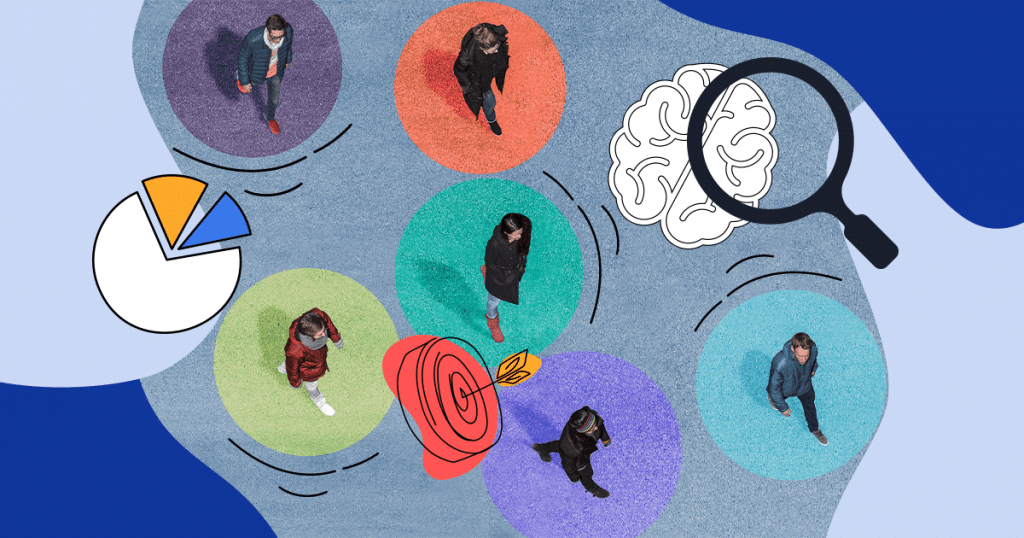Your customer database likely has a wide variety of individuals in it, no matter how tight your buyer personas and target audiences are.
In order to effectively market to potential customers and personalize the messages to them, you need to be able to segment them into groups.
Segmentation is the process of dividing up your customers into groups based on similar characteristics, and it’s helped brands for years manage their digital marketing efforts.
There’s no question that segmentation is a big part of any marketing plan, but a type of segmentation you might not have heard about is psychographic segmentation.
- But what does psychographic segmentation mean?
- Why does it matter when planning your marketing strategies?
- What variables do you need to consider?
In this article, we’ll answer those questions and take a look at 5 psychographic segmentation examples to help support your marketing segmentation efforts.
Download this post by entering your email below
What is Psychographic Segmentation?
Psychographic segmentation refers to the process of segmenting your customer base based on customers’ thoughts, beliefs, perceptions, and habits.
These psychological traits can be drawn from observing the lifestyles and preferences of your contacts and trying to think about the why behind the actions they take.
When you can understand the psychological characteristics of your customers, you have the ability to market to the core of their beliefs and habits, which can have a major impact on the success of your campaigns.
Some of the characteristics will include:
- Social class
- Hobbies
- Lifestyle
- Attitudes
- Interests
- Opinions
- Values
- Religion
- Social status
The History of Psychographic Segmentation
The origins of psychographic segmentation are often traced back to a man named Arnold Mitchell who created a framework called VALS in 1980.
The VALS framework focused on the values, attitudes, and lifestyles of different consumers and taught marketers how to leverage that information for market research purposes.
The framework asked four key questions that drove the process:
- What motivates my customers?
- What principles do my users have?
- What are their inherent beliefs?
- What drives users to make conscious and/or unconscious decisions?
By thinking through these questions and working to discover the answers in your customer base, you can try to predict the reasoning behind behaviors and use those results to inform the strategic marketing decisions that your business and brand make.

Why Does Psychographic Segmentation Matter?
As with all segmentation methodologies, there are many benefits to choosing to group your customers into specific categories.
By grouping your audiences into groups based on their lifestyles and personalities, you can start to see the benefits you can achieve.
Understanding
You’ll begin to understand the reasoning behind your customer’s demands, needs, concerns, motivations, and aspirations.
Communication
You’ll be able to communicate messages to your customers that reach them on an emotional, personal level that other segmentation misses.
Customization
You’ll be able to craft deeply personal messages for your audiences and control the personalization that each segment receives, rather than just sending out general messages.
Improving Lives
Rather than just speaking about the benefits of your products and services, you can tailor your messages to how your offerings can improve the lives and lifestyles of your audiences.
Learning
You’ll be able to learn more about your customers and gain better perspectives on the reasons behind the decisions they make, which further helps you develop your marketing strategies.
Going Beyond
You can take your segmentation beyond the basic demographic segmentations that most brands use as the basis behind their segmentation strategies.
Psychographic vs. Behavioral Segmentation
Psychographic segmentation is often conflated with another type of segmentation: behavioral segmentation.
However, there are clear differences between the two different approaches to dividing up your customers and leads.
Psychographic segmentation focuses on the “why” behind customer decisions.
As discussed above, this is a more difficult type of segmentation to create compared to easier demographic and geographical segmentation methodologies.
When you understand the psychographic segments of your customers, you can speak to them on a deeply personal level.
Behavioral segmentation, on the other hand, looks to answer the “how” of your customer decision-making process.
It takes into consideration the ways in which your customers go about making decisions, including:
- Spending habits
- Purchasing habits
- Product feedback
- Brand loyalty
- Browsing habits
- Brand interactions
This type of information is especially important for B2C and eCommerce brands who need to understand how their customers purchase directly from the brand.
There are many ways to gather behavioral segmentation information, including looking at:
- Website sessions
- Page visits and number of pages visited
- Time spent on your site
- Shopping cart history
- Campaign interaction history
- URLs visited
- Referral sources
- Exit and bounce rates
Psychographic Segmentation Variables
Now that you understand what psychographic segmentation is and why it’s valuable to your brand, let’s take a look at the five different variables that define your psychographic segmentation strategies.
Personality
The personality of your customers is key to being able to effectively psychographically segment your contacts.
Examples of typical personalities can include those who are creative, emotional, introverted, extroverted, opinionated, friendly, closed-off, and organized.
Lifestyle
Lifestyle refers to the major ways in which groups of people live their lives.
That can include specifics like athletics, traveling, green living, minimalists, and other types of activities and behaviors that define a large part of a person’s life and decisions.
Social Status
A customer’s social status is often related directly to the types of products and services that your audiences are looking for.
It has an effect on the price points they look at, the industries they look at, the types of products they want, and even the specific brands that they want to engage with.
Activities, Interests, and Opinions (AIO)
Often abbreviated to AIO, the activities, interests, and opinions of a customer refer to the types of things they like doing.
They are often much less involved than the lifestyle psychographic segments and can include things like favorite teams, television show genres, outdoor activities, and after-work hobbies.
Attitudes
A customer’s attitude refers to the specific types of opinions a customer has formed that guide many of their actions.
It’s a hard psychographic demographic to narrow down, but it can include things like religious influence, cultural backgrounds, and customer upbringings.
5 Examples of Psychographic Segmentation in Marketing
Now that we understand the different variables that guide psychographic segmentation, let’s take a look at those variables in action.
We’ll take a look at five psychographic segmentation examples that take each of those specific characteristics and put them into a real-world example scenario.
1. The Personality Example
A wine and alcoholic beverage brand has recently discovered that the majority of its customers have outgoing personalities and like to enjoy their products in the company of others.
After segmenting out this group, the brand changed its messaging from being a delicious accompaniment for a meal to a great product for parties and gatherings.
2. The Lifestyle Example
A health bar brand learned through examining the lifestyles of their customers that there is a psychographic segment that enjoys hiking and other outdoor activities.
They changed their marketing for that specific segment from focusing on health benefits to how their product is a great recovery snack that travels well outside.
3. The Social Status Example
A clothing brand has recently discovered that there is a psychographic segment of their customer base that is of a lower social status than they had thought.
They then change their marketing strategy for that group from talking up the high-end quality of the product to talking about how long-lasting the product is for the cost.
4. The AIO Example
A snack food brand has learned through its psychographic segmentation efforts that there is a significant portion of its customers who enjoy its snacks at tailgates and football game viewing parties.
They changed the marketing for that group from an easy snack for kids to take to school to a great party appetizer for adults.
5. The Attitude Example
A makeup brand has recently learned that there are significant segments of its customers who believe in sustainable and cruelty-free practices.
The brand then adjusts its marketing to directly address that the products are never tested on animals and that the materials are locally sourced.
Wrap Up
Psychographic segmentation involves taking specific characteristics and variables and turning them into similar groups that you can reach through targeted, personalized messages.
In order to have successful psychographic segmentation, you need to understand the characteristics of your customers and learn how to speak to them directly.
Psychographic segmentation is different from other forms of segmentation, including the popular behavioral segmentation.
However, understanding multiple forms of segmentation helps you gain better insights into your customer base and allows you to find specific trends and patterns to discover what tactics work best with your audiences.
If you want to learn more about other forms of marketing, check out our blog on behavioral marketing.
There you’ll learn everything you need to know about what behavioral marketing is, why it matters in your marketing strategies, and how it works.
But understanding your customer’s behavior is just the first step of a series of tactics that compose your marketing strategy. Remember that creating high-quality, engaging content is another critical one.
For that, there’s WriterAccess, a content creation marketplace that combines the efficiency of AI-powered tools with the creativity of human writers.
Why not give it a try today? Sign up for WriterAccess now to get 14 days of free access to our network of expert writers and deliver content that speaks to your audience!




![[ROCK NA] [EBOOK SEO] Complete Guide](https://rockcontent.com/wp-content/uploads/2024/06/banner_Search-Engine-Optimization.png)






